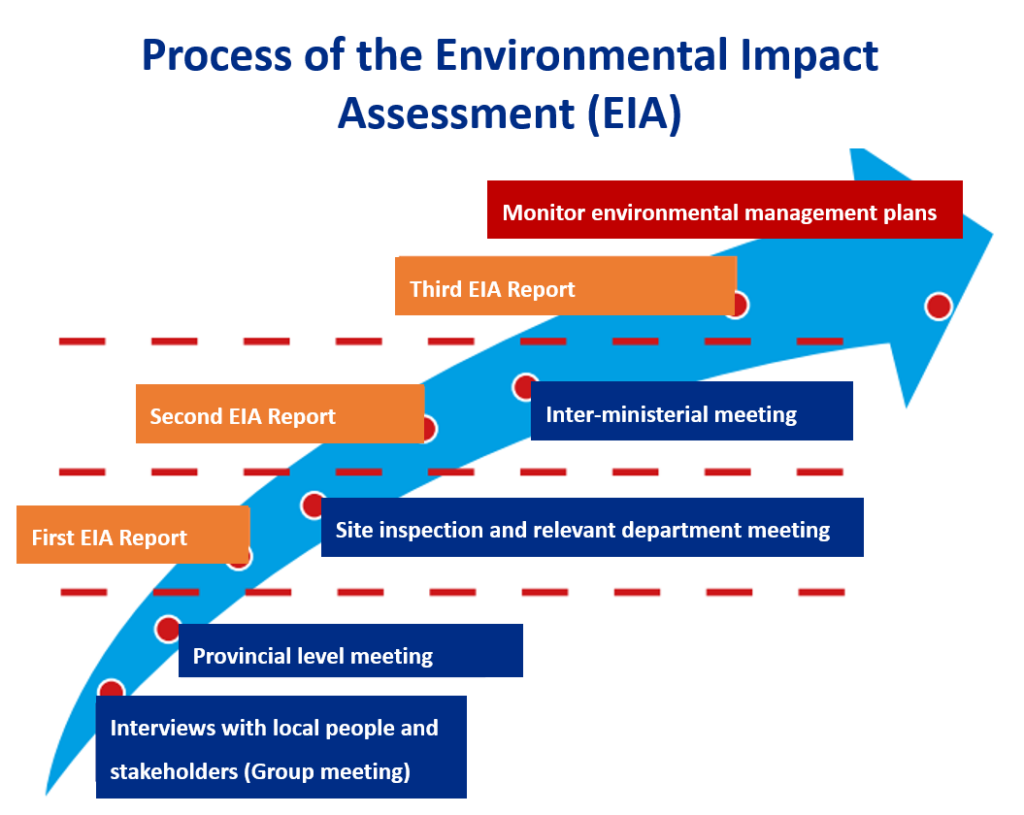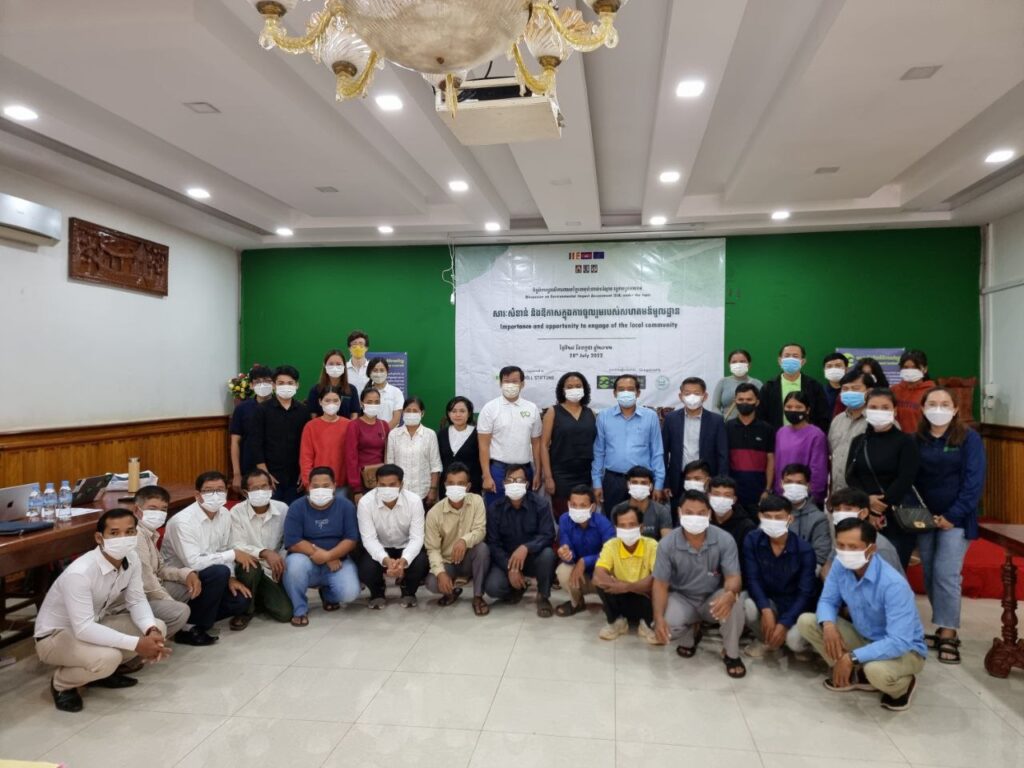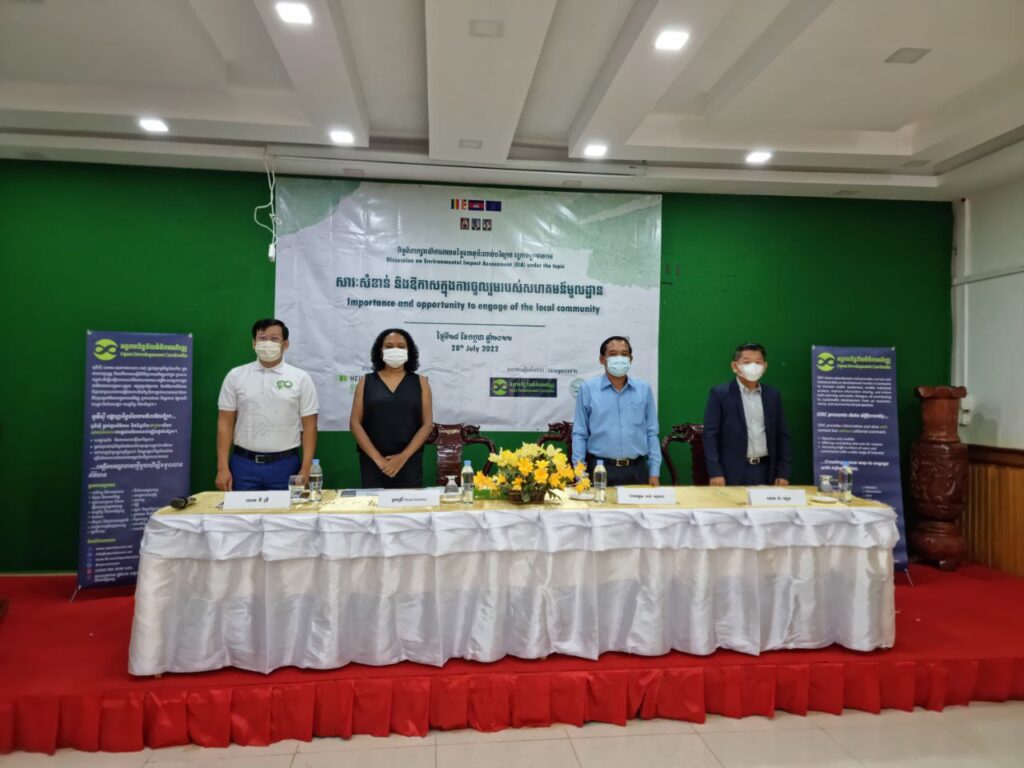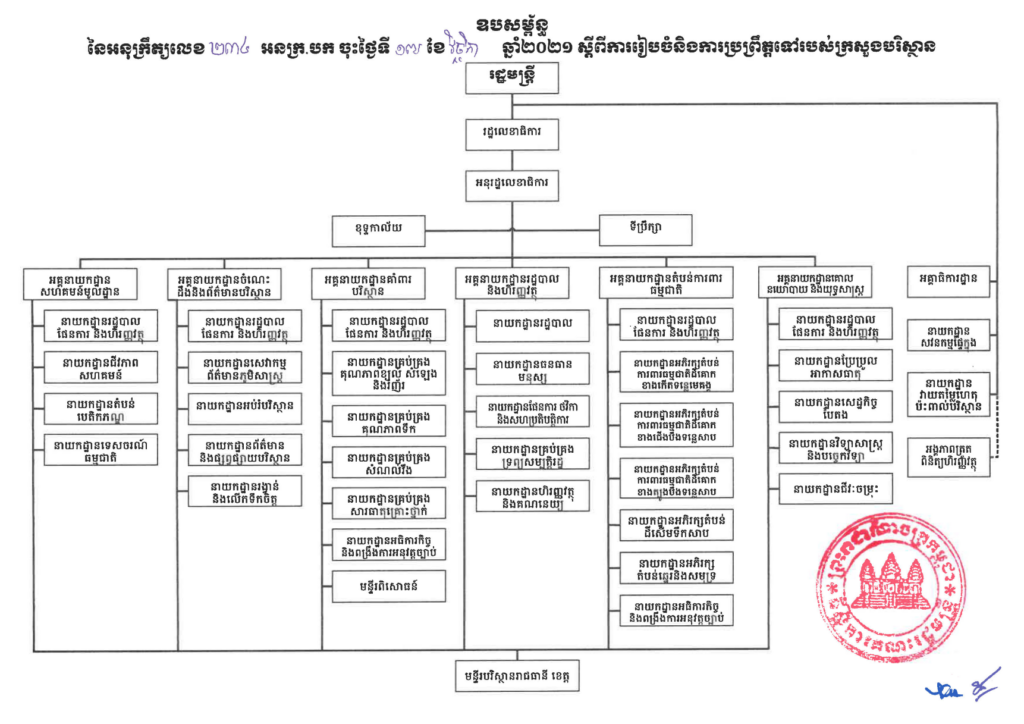Environmental impact assessment (EIA): importance and opportunity to engage the local community
The opening of the Cambodian economy in the 1990s and the new Investment Law (2021) encouraged investment in development projects in a range of sectors, including extractive industries, physical infrastructure, agriculture, hydropower, and ecotourism, among others. These sectors are obligated to carry out the Environmental Impact Assessment (EIA), as the scope of the study depends on the project’s size. The EIA is vital in identifying the benefits, impacts, and range of the investment or development projects on the socio-economic and environment. It is essential for Cambodia’s local communities, primarily indigenous peoples (IPs) since they are particularly vulnerable to the negative impacts of the new development projects because their culture, traditions, knowledge, beliefs, and livelihoods are tightly linked to the land and the environment. Therefore, it is crucial to provide transparent information about the initial findings of the EIA to the local communities and IPs, give them a platform to engage in the relevant associated discussions, and monitor the process.
On 28 July 2022, ODC organized the discussion “Environmental Impact Assessment (EIA): importance and opportunity to engage the local community” in Ratanakiri province with CIPO and HBS’ support. The event aimed to raise awareness about the significance and importance of disclosing EIA reports to discuss new opportunities to engage in the report-making process and enhance monitoring opportunities. The event gathered 47 participants – 14 of which were women – including Ratanakiri’s Deputy Governor, representatives of the EIA Department of the Ministry of Environment (MoE), Provincial EIA Department, Heinrich-Böll-Stiftung (HBS), Open Development Cambodia (ODC), Cambodia Indigenous Peoples Organization (CIPO), 3S River Protection Network (3SPN), Highlanders Association (HA), Converse Indigenous Peoples Languages (CIPL). Participants also included media groups, local youths, members of local communities, and IPs.
EIA’s current status
The EIA Department was previously under the Environmental Protection Department. Yet, it is currently under the Minister of Environment. The EIA is a complex and lengthy study or assessment involving various local and national stakeholders. A summary of the EIA procedure can be found in the leaflet. EIA’s principle is to manage the information collected about each project and site and the environmental impacts. During the EIA process, information about the adverse effects of each project is gathered to identify the most suitable solutions and alternatives to deal with any negative effects.
There are two types of EIA. The first is the initial EIA, which focuses on analyzing secondary data. The second type is the completed EIA, which conducts observations and collects primary data about pollution, vibrations, noise, and forestry inventory, among others.
Consultancy firms – registered with the government – are usually responsible for the EIA reports. All consultancy firms must register with the government to ensure the quality of the study. Therefore, there will be an agency to take responsibility if there is anything wrong with the result. Nonetheless, there have been concerns about the accuracy and completeness of the evaluations by these consultancy firms, questioning the acceptance of their reports. Consulting firms will face legal consequences, fined, and some members can be imprisoned if the corresponding ministry identifies fraudulent practices. Still, information in such regard is scarce.
Importance and opportunity of the engaging
Public participation consists of consultation processes with various stakeholders about development projects. Actors involved include ministries, institutions and organizations, local authorities, relevant departments, project owners, consultancy companies, groups of affected people, and representatives of NGOs involved in the project and the area.
Engaging with numerous stakeholders is a critical part of the EIA process to disseminate detailed information about the development project and gather concerns, suggestions, criticisms, support, comments, and information on the existing environmental resource within the project area. Community members affected by the projects should express their concerns to project developers during public participation. Alternatively, they can do so through NGOs like NGO Forum on Cambodia. The government provided a seat for NGO Forum on Cambodia to raise the concerns they gathered from participants. The Ministry of Environment (MoE) is considering providing the EIA reports to provincial departments since information on that matter (EIA reports in the EIA Department of the MoE) is abundant.
Public participation consists of four stages:
- Stage 1: Interviews with local and relevant authorities
- Stage 2: Group consultation with citizens
- Stage 3: Group consultation with relevant departments and institutions
- Stage 4: Dissemination workshop at a provincial level to share results.

In some cases, if the land where the project is being developed is sacred or affects the graves of people’s ancestors, the developing company should not work on the ground. The community should be notified when a development project will affect their community, and consultants – and the company responsible for the project – should discuss the project with the community. Local authorities also play a crucial role in informing the community about the company’s projects and plans. If the development project does not follow the EIA or legal framework, the community can report it and discuss the project with the authorities to identify solutions.




